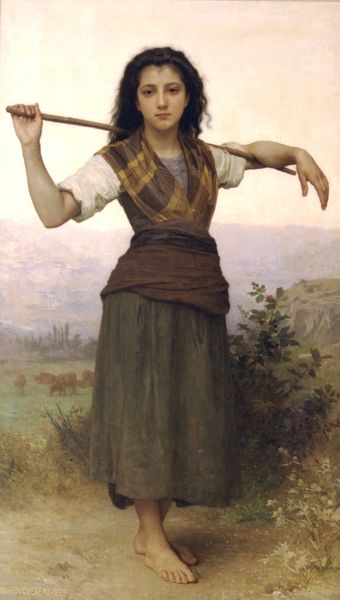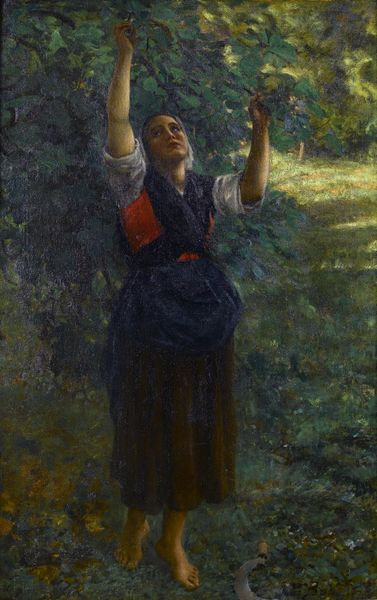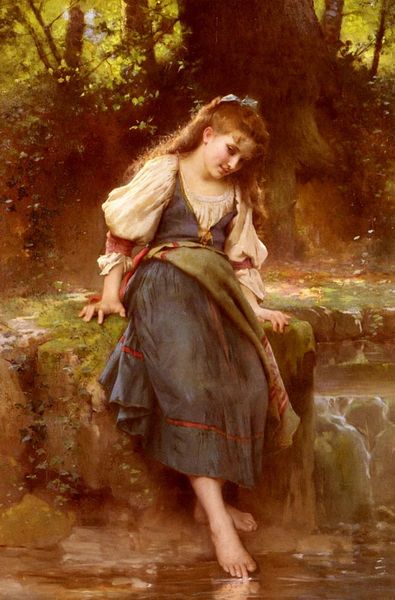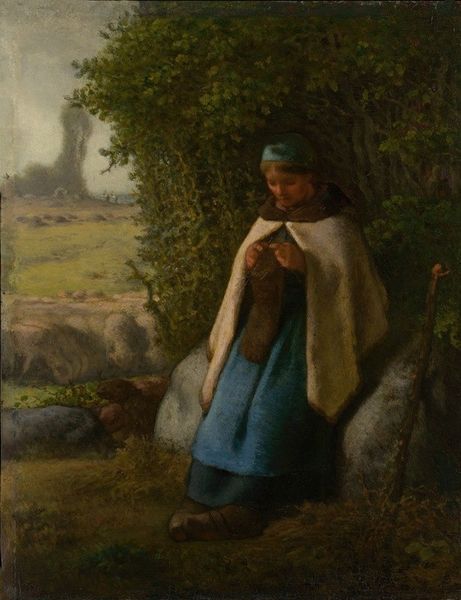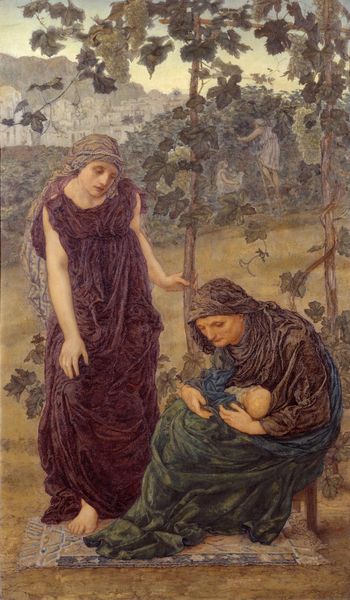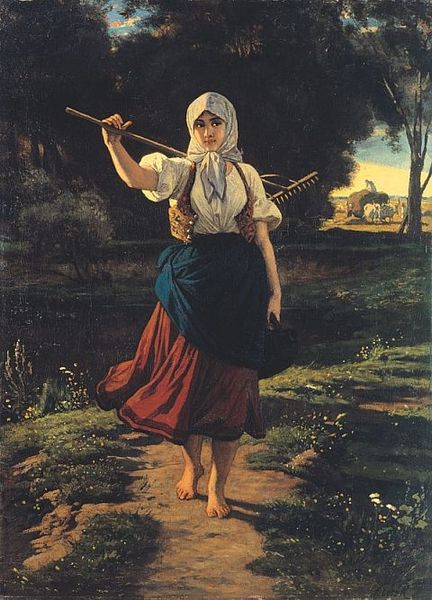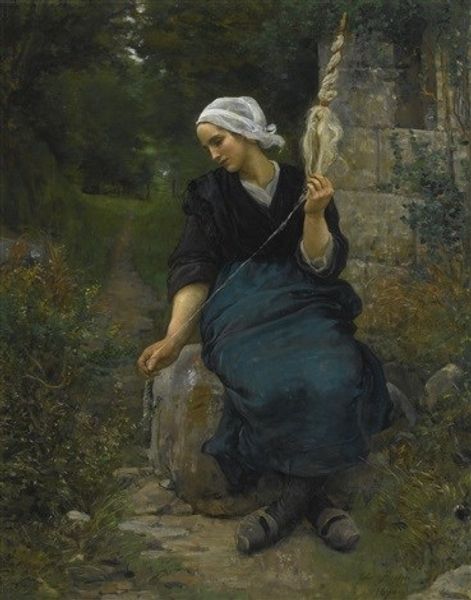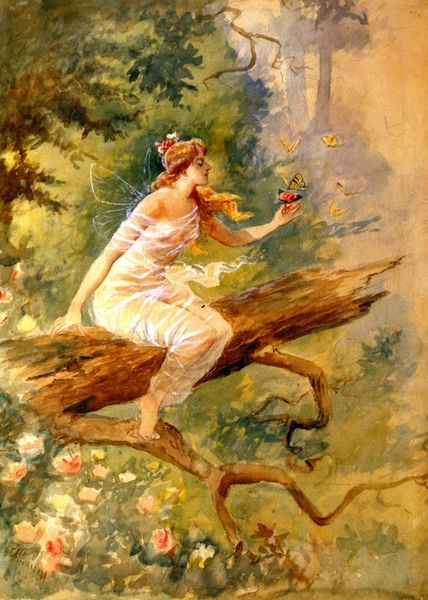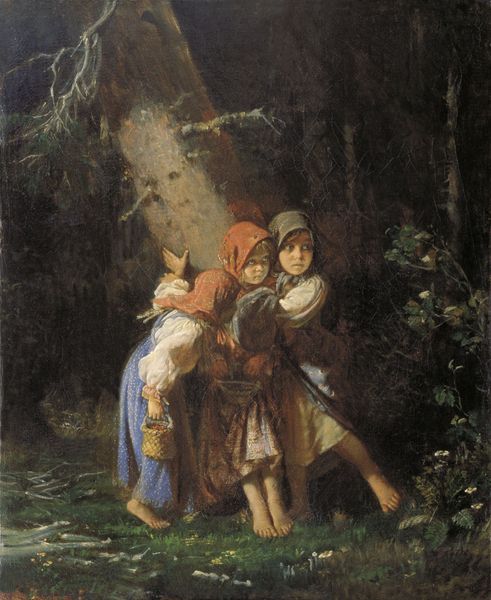
Dimensions: 61.6 x 50.8 cm
Copyright: Public domain
Editor: This is "Asleep in the Woods," painted by Jules Breton in 1877. It's oil on canvas, depicting a woman resting in a tree. It's remarkable how Breton captures a sense of tranquility, almost like stepping into a dream. What are your initial observations? Curator: Immediately, I am drawn to the composition itself. The figure's placement bisects the canvas in an interesting manner. The strong verticality of the tree contrasts the figure’s relaxed, almost horizontal pose, creating a subtle visual tension. Note also Breton’s use of light. Where does your eye go first? Editor: Definitely to her face; it's the brightest part of the painting, surrounded by the darker colors of her hair and the tree bark. Curator: Precisely. Notice how the tonal arrangement serves to direct our gaze. Now, consider the brushstrokes. Are they uniform throughout the canvas? Editor: No, the background is much looser, with visible strokes, while her face and clothing have finer detail. It gives the sense of depth, as if the artist prioritized her figure and let the forest act as a backdrop. Curator: An astute observation. Breton’s application of paint creates a hierarchy. We perceive her presence through both light and focused detail. It suggests a psychological, or perhaps even allegorical reading – her rest a point of concentrated form within a broader, more diffuse natural setting. How does that affect your understanding of the work? Editor: It makes me wonder if Breton intended for us to focus less on the ‘where’ and more on the ‘who.’ Thank you for guiding me through the elements; I notice the interplay between the figure and the background now much more vividly! Curator: Indeed, examining the intrinsic pictorial structure often unveils a richness in its conceptualization.
Comments
No comments
Be the first to comment and join the conversation on the ultimate creative platform.
